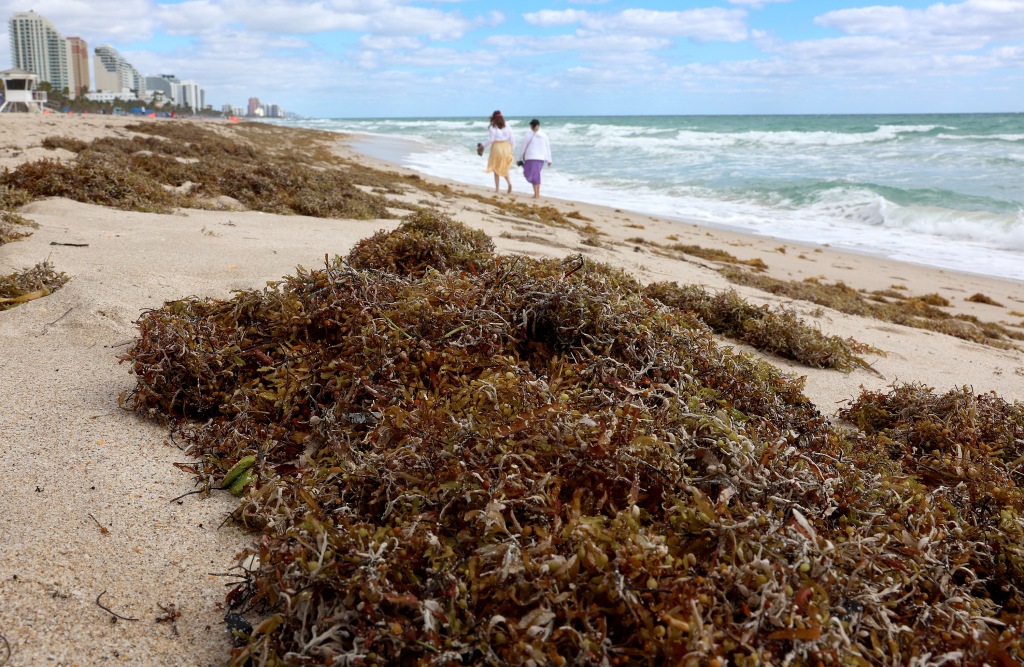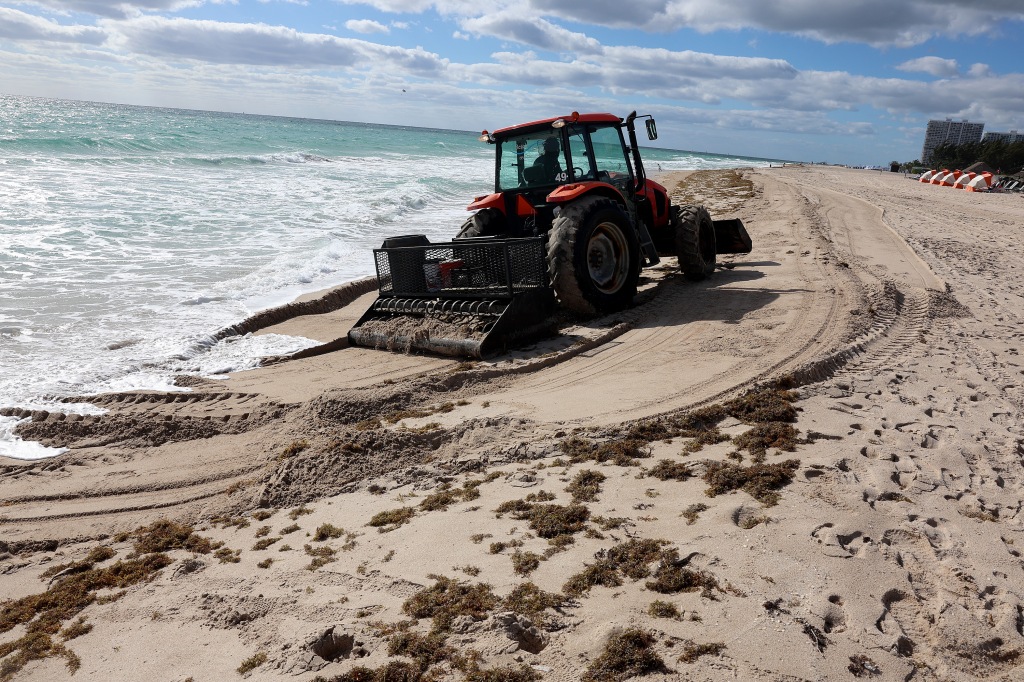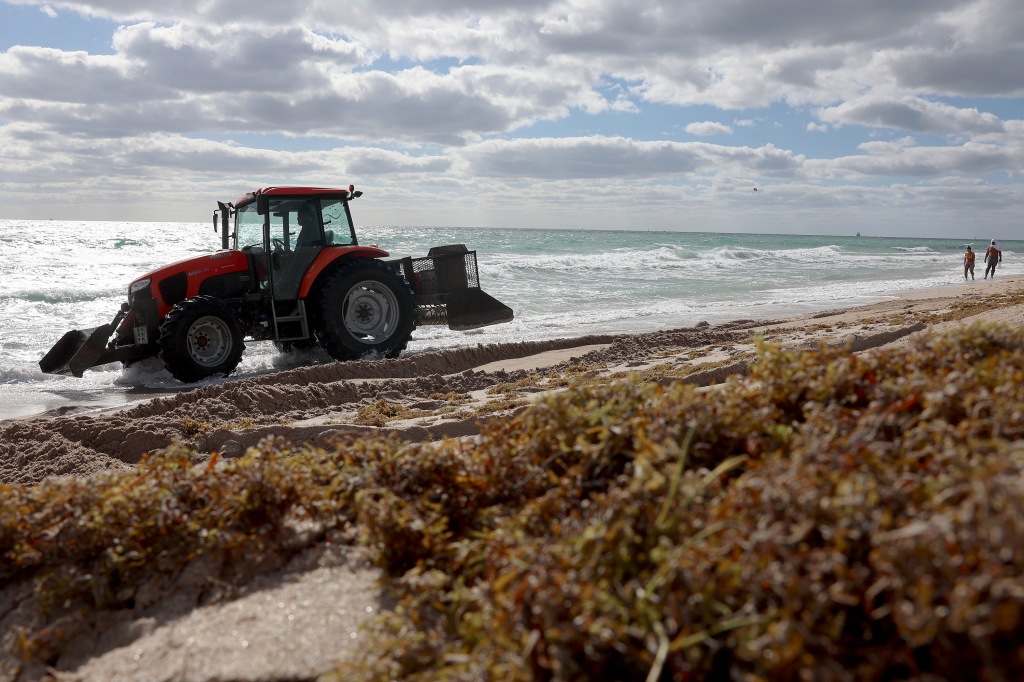Massive seaweed bloom starts washing ashore Florida beaches
A massive buildup of seaweed that scientists have tracked for months has started to wash ashore the Sunshine State, with experts warning that the worst could still be ahead.
Reports from Key West, Fort Lauderdale and other South Florida communities show clumps of brown seaweed piled up along what are usually white, sandy beaches.
Experts from the University of South Florida and other institutions have tracked the sargassum with the help of satellites and believe the amount of seaweed in the Atlantic basin was around 6.1 million tons, the second-highest amount ever recorded during February.
Dr. Brian Barnes, an assistant research professor at the University of South Florida’s College of Marine Science, is monitoring the seaweed and believes larger amounts should be offshore during the late spring and early summer.
“Larger amounts should be offshore Florida starting in April through July or so. Most of this, however, will stay offshore. If the currents and winds dictate, a patch may be pushed ashore to impact beaches on a local scale,” Barnes stated.
According to the Florida Health Department, the seaweed is not harmful to humans, but it can still lead to impacts.
Aside from an unpleasant odor, similar to that of rotten eggs, tiny creatures living in the sargassum can produce rashes and blisters.
Health experts advise people never to eat seaweed because it also may contain large amounts of heavy metals such as arsenic and cadmium.
For many species of marine life, the brown algae is actually considered to be helpful, and biologists believe that the buildup provides food and refuge for fish, crabs, shrimp and other smaller organisms.


The sargassum is quite different from the red tide event that is simultaneously impacting Florida beaches, mainly along the Gulf Coast.
Red tide is a harmful algal bloom and was spotted in the days after Hurricane Ian in Southwest Florida and expanded during early 2023.
The ongoing toxic event caused hundreds of fish to wash ashore, and biologists believe that even manatees have been impacted by high levels of the organism known as Karenia brevis.


Specialists haven’t nailed down what causes some years to have a more extensive algae production than others but point to a combination of variable factors, including runoff from major waterways.
“It’s hard to know causation, but, in general, blooms will occur when you have the right suite of conditions: temperature, light, a seed and nutrients,” Barnes stated.
Asides from being unpleasant to see and smell, algae plumes can cost coastal communities big money for clean up, and the events can even drive tourists away.
An effort in 2018 to clean up beaches in the Caribbean from a massive bloom was estimated by the Global Tourism Resilience and Crisis Management Centre to be more than $120 million, and a study found that a severe sargassum year in South Florida would yield similar impacts.
According to a study conducted for the Florida Keys and Monroe County, a significant sargassum event could cost the heavy tourism-reliant region at least $20 million in economic losses and hundreds of local jobs.
Read the full article Here


